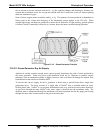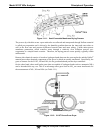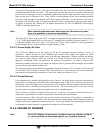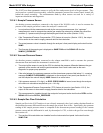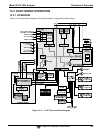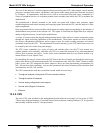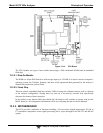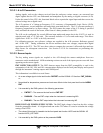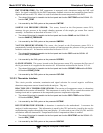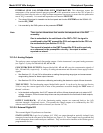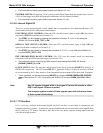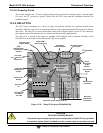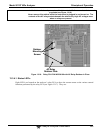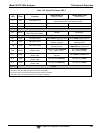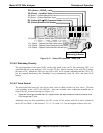
Model 9110T NOx Analyzer Principles of Operation
Teledyne Analytical Instruments 341
13.3.3.1. A to D Conversion
Analog signals, such as the voltages received from the analyzers various sensors, are converted into
digital signals that the CPU can understand and manipulate by the analog to digital converter (A/D).
Under the control of the CPU, this functional block selects a particular signal input and then coverts the
selected voltage into a digital word.
The A/D consists of a Voltage-to-Frequency (V-F) converter, a Programmable Logic Device (PLD),
three multiplexers, several amplifiers and some other associated devices. The V-F converter produces a
frequency proportional to its input voltage. The PLD counts the output of the V-F during a specified
time, and sends the result of that count, in the form of a binary number, to the CPU.
The A/D can be configured for several different input modes and ranges but in the 9110T it is used in
unipolar mode with a +5V full scale. The converter includes a 1% over and under-range. This allows
signals from –0.05V to +5.05V to be fully converted.
For calibration purposes, two reference voltages are supplied to the A/D converter: Reference ground
and +4.096 VDC. During calibration, the device measures these two voltages, outputs their digital
equivalent to the CPU. The CPU uses these values to compute the converter’s offset and slope and uses
these factors for subsequent conversions. See Section 5.9.3.10 for instructions on performing this
calibration.
13.3.3.2. Sensor Inputs
The key analog sensor signals are coupled to the A/D through the master multiplexer from two
connectors on the motherboard. 100K terminating resistors on each of the inputs prevent cross talk from
appearing on the sensor signals.
PMT DETECTOR OUTPUT: The PMT detector output from the PMT preamplifier is used in the
computation of the NO, NO
X
and NO
2
concentrations displayed on the front panel display and reported
through the instrument’s analog outputs and COMM ports.
This information is available in several forms:
As a raw voltage signal via the test function PMTDET and the SIGNAL I/O function PMT_SIGNAL,
or;
Normalized for temperature, pressure and auto-zero offset via the front panel test function NORM
PMT.
It is recorded by the DAS system in the following parameters:
PMTDET – The same as the test function PMT DET.
RAWNOX – The raw PMT output when the instrument is measuring NO
X
.
RAW NO – The raw PMT output when the instrument is measuring NO.
HIGH VOLTAGE POWER SUPPLY LEVEL: The PMT high voltage is based on the drive voltage
from the preamplifier board. It is digitized and sent to the CPU where it is used to calculate the voltage
setting of the HVPS.
The value of this signal is viewable via the front panel test function HVPS and the SIGNAL I/O
function HVPS_VOLTAGE.
It is recorded by the DAS system as the parameter HVPS.



